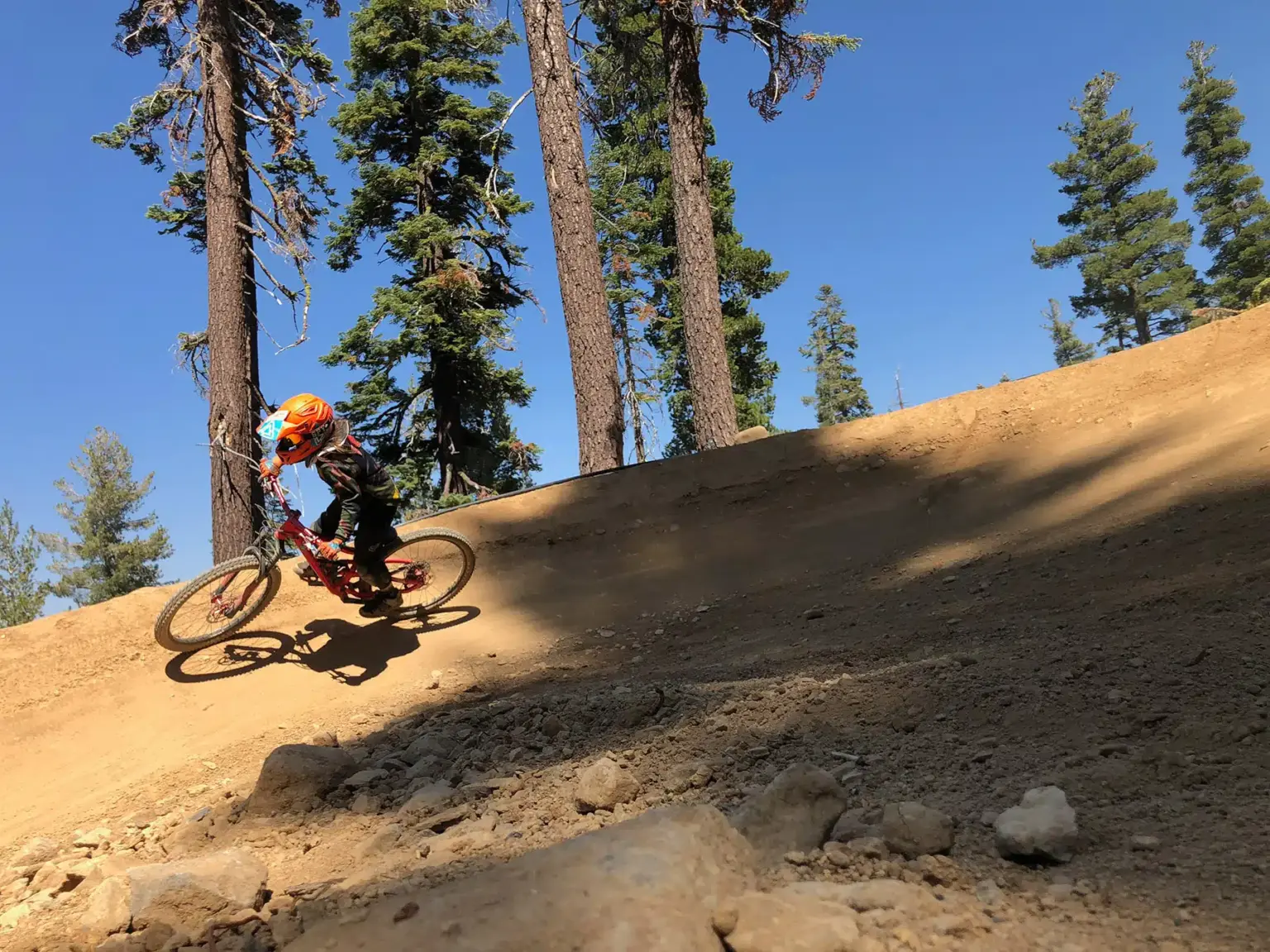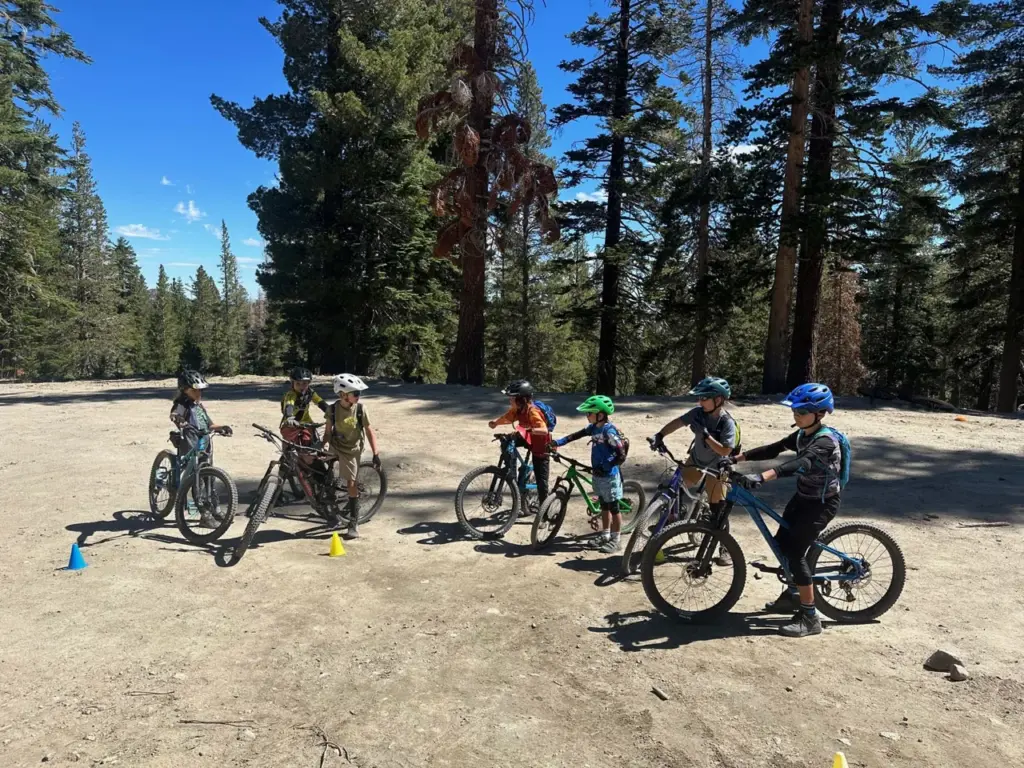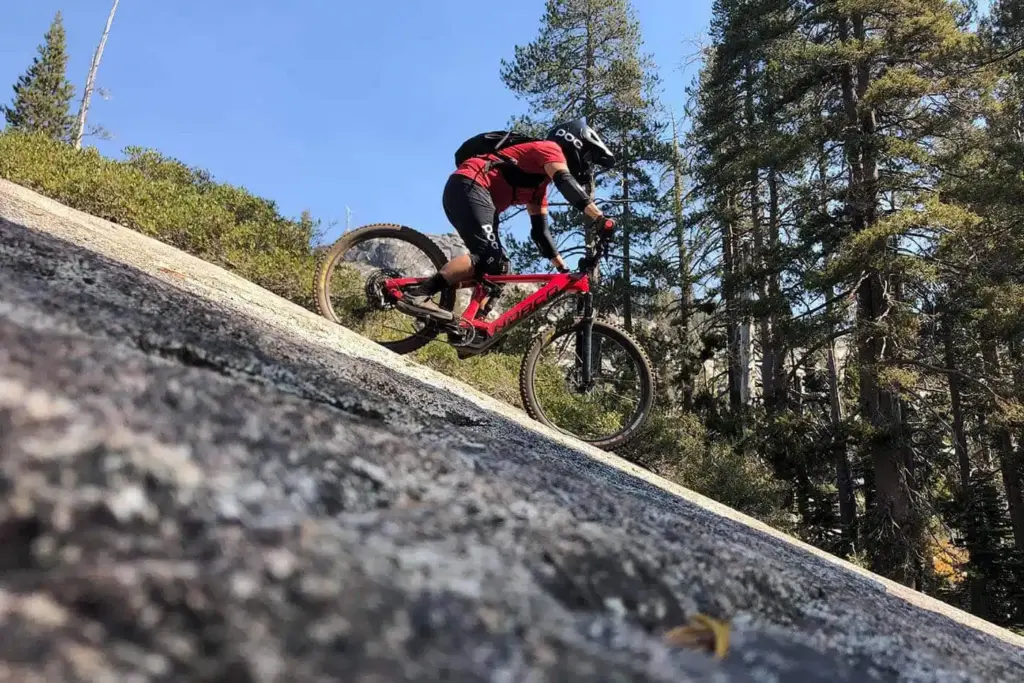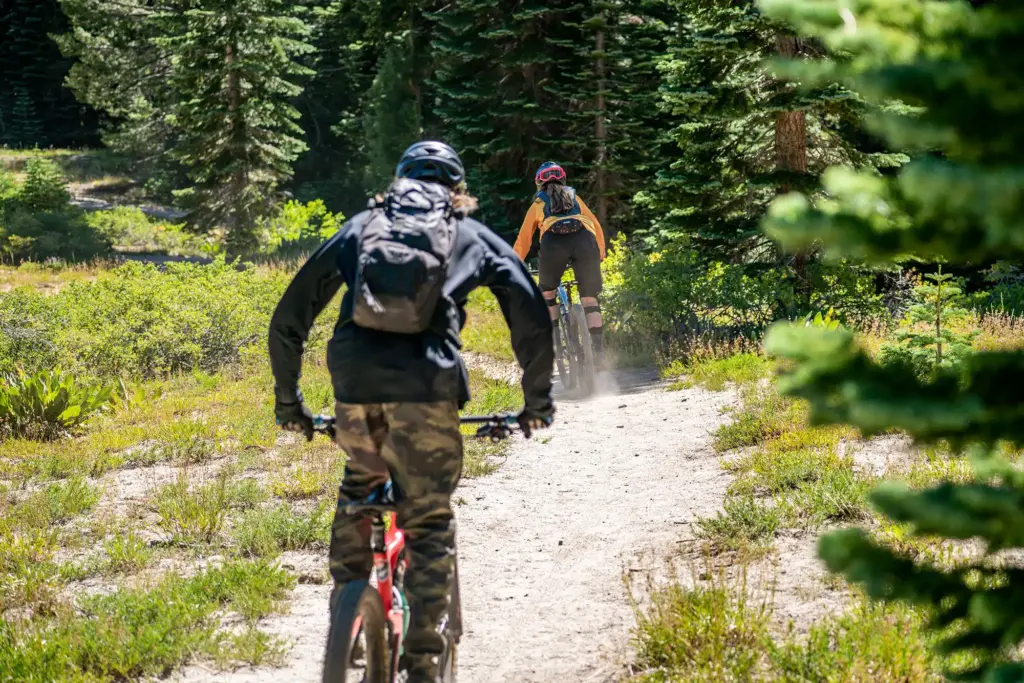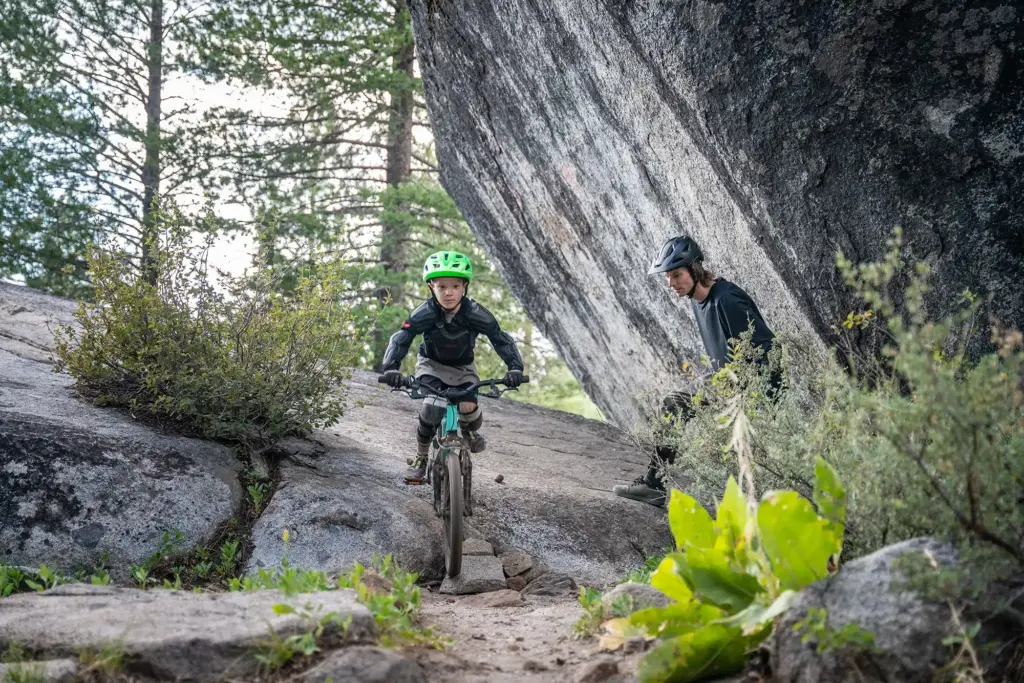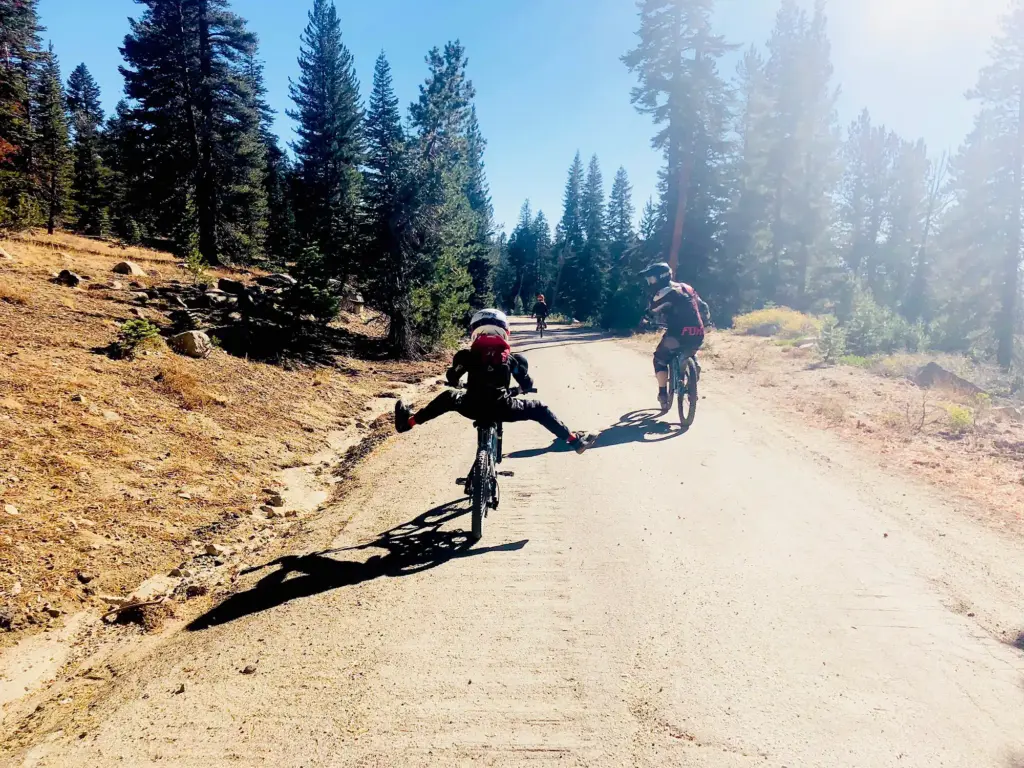Mountain biking is an exhilarating adventure that combines the thrill of speed, the beauty of nature, and the technical challenges of the trail. One essential skill that every mountain biker should aim to master is the art of riding corners & berms.
Skillful cornering and flowing through berms not only enhance your overall riding experience but also improve your efficiency, control, and safety on the trails. In this blog post, we will delve into the techniques and tips that will help you take your cornering and berm-riding skills to the next level.
Vision and Line Selection
The foundation of a successful cornering technique lies in your vision and line selection. Look ahead, scanning the trail and analyzing the corners and berms before you reach them. Identify the best line that will allow you to maintain speed, control, and stability. Smooth out any rough sections by selecting the optimal trajectory that minimizes the need for sudden braking or excessive steering adjustments.
- Anticipate upcoming changes in terrain: Constantly adjust your gaze to look further down the trail rather than just at the immediate path ahead. This helps in anticipating changes in trail conditions or unexpected obstacles early enough to adjust your line without compromising speed.
- Utilize visual cues: Focus on specific markers such as rocks, roots, or changes in trail color to gauge the best path through corners. These visual cues can act as guides to help you navigate through tricky sections more smoothly.
- Practice in varying conditions: Challenge yourself by riding in different weather conditions and at different times of day. This can help improve your ability to make quick line choices under varying visibility conditions, enhancing your overall adaptability on the trail.

Body Positioning
Maintaining the correct mountain bike cornering body position is crucial for effective cornering and berm riding. As you approach a corner or berm, shift your body weight to the outside pedal, lowering your center of gravity and creating stability. Bend your elbows and knees, and keep your body relaxed and loose to absorb any bumps or changes in terrain. Distribute your weight evenly on both wheels, and lean your bike into the turn, allowing the tires to grip the trail.
- Adjust your grip on the handlebars: Lighten your grip as you maneuver through turns. A tight grip can lead to tension in your arms and shoulders, reducing your ability to absorb shocks effectively and adjust quickly to changes in the terrain.
- Practice the ‘attack position’: When not actively turning, maintain an attack position with your pedals level, knees and elbows slightly bent, and your rear slightly off the saddle. This position readies you to shift your weight quickly and efficiently as needed for upcoming turns.
- Tailor your stance to the trail: Different trail types might require subtle changes in body positioning. For instance, steeper and rockier trails might necessitate a more rearward weight distribution to enhance traction and control.

Braking and Speed Control
Before entering a corner or berm, ensure you have appropriately controlled your speed. Feather the brakes smoothly and gradually, adjusting your speed to match the demands of the turn. Avoid hard braking or locking up your wheels, as this can lead to loss of traction and stability. Remember, entering a corner or berm with the right speed is essential for maintaining flow and control throughout the maneuver.
- Practice modulating brake pressure: Learn to adjust the pressure on your brakes rather than applying them fully or not at all. This skill helps maintain traction while adjusting speed smoothly, which is critical on loose or slippery surfaces.
- Use both brakes effectively: Combine the use of both front and rear brakes to achieve a balanced braking force. Relying too heavily on one can cause understeer or oversteer, leading to crashes or loss of control.
- Train on different gradients: Practice your braking techniques on varying slopes to better understand how gravity affects your speed and braking needs. This experience can improve your confidence and efficiency in speed control during actual trail riding.

Entry and Apex Points
Understanding the concepts of entry and apex points will greatly improve your cornering abilities. The entry point is where you start turning, and the apex point is the tightest part of the corner. Aim to enter the corner wide, allowing for a smoother and more natural trajectory. As you approach the apex, gradually tighten your line, using the whole width of the trail. Once you pass the apex, exit the corner wide, maximizing your speed and carrying momentum into the next section.
- Visualize your path before you ride: Before tackling a corner, visualize the line you will take from entry to exit. This mental mapping can help you execute the turn more smoothly and with greater precision.
- Adjust your approach based on corner sharpness: For sharper turns, you might need to enter even wider to accommodate a tighter apex. This adjustment ensures you maintain momentum without overshooting the corner.
- Practice with different cornering techniques: Experiment with various cornering techniques such as late apexing, where you delay your turn-in to approach the apex later than usual. This can provide a straighter exit line, allowing for higher exit speeds and better control in certain types of corners.
Berm Riding Technique
Berms are banked corners built into the trail, specifically designed to enhance flow and control. When approaching a berm, enter with a wide line, maximizing your speed and using the berm’s banking to your advantage. As you lean into the berm, focus on maintaining an even weight distribution and a balanced body position.
Master the berm: Enter with speed, lean with precision, and exit with power. Use the full arc of the berm to maintain momentum and control, ensuring every corner becomes an opportunity to accelerate.
Look ahead towards the exit of the berm, keeping your eyes on the desired line. Use your arms and legs to absorb any bumps and keep your bike glued to the berm. As you exit the berm, smoothly transfer your weight back to a centered position and carry your speed into the next section of the trail.
To ride berms faster and more efficiently in mountain biking, focus on mastering several key techniques:
- Enter with Speed: Approach the berm with momentum. Begin your turn from a wide line, which allows you to carry more speed into the corner. The speed helps your bike stay planted due to the centrifugal force, utilizing the berm’s bank to your advantage.
- Lean with Precision: As you enter the berm, lean your bike into the turn while keeping your body more upright. This body-bike separation is crucial. Ensure your weight is distributed evenly between the front and rear wheels for optimal traction and control.
- Exit with Power: As you navigate through the turn, look ahead towards the berm’s exit. This will help you align your bike on the most efficient line and prepare to exit the berm with acceleration. Smoothly transfer your weight back to a centered position over the bike as you leave the berm, carrying your momentum forward.
- Maintain Momentum: Resist the urge to brake while on the berm. Instead, enter at a controlled speed that you’re comfortable with, which should be fast enough to help maintain the natural flow and momentum. The berm’s design supports speed, and braking disrupts this, reducing efficiency.
- Use the Full Width of the Berm: Start your turn from the outer edge and let your bike naturally sweep down towards the inner edge as you progress through the turn. This not only maximizes the use of the berm for speed control but also helps maintain a smooth, fast line.
- Strengthen Core Muscles: Strong core muscles are essential for maintaining stability and balance while aggressively leaning into a berm. Regularly incorporate core-strengthening exercises into your training regimen. This will enhance your ability to hold a balanced and controlled body position throughout the turn.
Practicing these techniques will really boost your skills at riding berms. You’ll be able to speed up on every turn and get better and smoother at riding trails overall.

Pumping and Generating Speed
To maximize your speed through corners and berms, practice the technique of pumping. As you enter a berm or corner, compress your bike and body into the turn, utilizing the natural transition of the trail. As you exit the turn, extend your bike and body, generating speed and momentum by pushing against the bike. Mastering the art of pumping will allow you to carry your speed through corners and berms, making your rides faster and more enjoyable.
- Sync your movements with the terrain: Align your pumping actions with the natural ups and downs of the trail. Compress into dips and release on rises to use the trail’s features to your advantage, thereby amplifying your speed without additional pedalling.
- Focus on smooth transitions: Ensure that your movements from compression to extension are smooth and fluid. Jerky transitions can disrupt your momentum and reduce the effectiveness of your pumping technique.
- Practice on different types of corners: Use pumping not just on berms but also on flat and off-camber corners to understand how different angles and inclines affect your ability to generate speed. This broad practice will help you become more versatile and efficient in using this technique across various trail conditions.

Trail Awareness and Adaptability
Not all corners and berms are created equal. Each trail presents unique challenges, such as varying angles, tightness, and terrain conditions. Develop your trail awareness and adaptability by analyzing each corner or berm individually. Adjust your techniques, speed, and line selection accordingly to suit the specific characteristics of the trail. By being adaptable and responsive, you’ll be able to maintain control and optimize your performance on any type of corner or berm.
- Continuously evaluate trail conditions: Keep an eye on the trail’s condition as you ride. Changes in moisture, loose gravel, or debris can drastically affect the grip and handling of your bike, requiring on-the-fly adjustments to your riding technique.
- Use pre-ride walk-throughs: Whenever possible, walk parts of the trail before riding them. This allows you to identify critical sections and plan your strategy for handling different corners and berms without the pressure of being on the bike.
- Adapt your equipment to the trail: Consider adjusting tire pressure, suspension settings, and even gear choices based on the day’s trail conditions. Tailoring your bike setup can enhance your control and responsiveness, enabling better handling of diverse terrain features.
Practice and Progression
Improving your cornering and berm-riding skills takes time, practice, and patience. Start with gentle corners and berms, gradually progressing to more challenging ones as your confidence and abilities grow. Experiment with different techniques, lines, and speeds to find what works best for you. Regularly practice these skills on various trails, both during your rides and through dedicated cornering drills, until they become second nature. If you would like to make some faster progress, we can help!
- Set specific goals for each practice session: Focus on one or two aspects of your technique during each ride, such as braking efficiency or body positioning. This targeted approach helps build proficiency more quickly than trying to improve everything at once.
- Use video analysis: Record your rides to review your performance. Video analysis allows you to visually confirm what you feel while riding and identify areas for improvement that may not be apparent from the saddle.
- Incorporate feedback from more experienced riders: Seek advice and critique from seasoned mountain bikers. They can provide insights and tips that accelerate your learning curve and help you avoid common mistakes.
Confidence and Trust in Your Skills
Riding corners and berms effectively requires confidence in your abilities. Trust the techniques you’ve learned and be confident in executing them. As you gain experience and witness the positive outcomes of proper cornering and berm-riding, your confidence will grow, allowing you to push your limits and tackle more technical sections with ease.
- Celebrate small victories: Acknowledge and celebrate improvements, no matter how small. Each successful corner navigated or berm mastered builds your confidence and reinforces your skills.
- Practice visualization techniques: Before riding, visualize successfully navigating challenging sections of the trail. Mental practice can build confidence just as effectively as physical practice by familiarizing your mind with the necessary actions.
- Gradually increase difficulty: Push your limits incrementally by gradually introducing more challenging elements into your rides. This approach ensures you are building your skills at a sustainable pace, reducing the risk of accidents due to overreaching your current abilities.
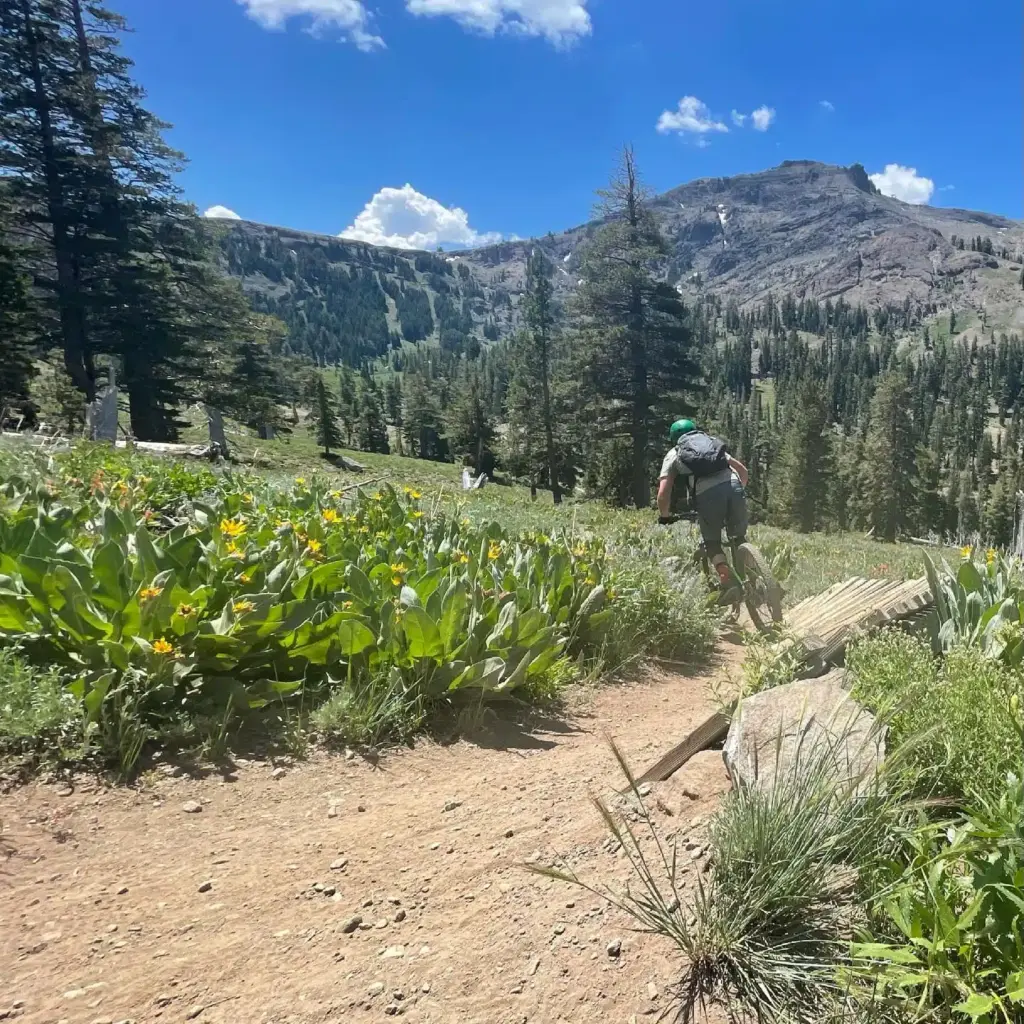
Safety First
While mastering cornering and berm-riding techniques is exciting, safety should always be a top priority. Always wear appropriate safety gear, including a helmet, knee pads, and elbow pads. Gradually progress to more challenging corners and berms, ensuring you have the necessary skills and experience to handle them. And most importantly, respect other trail users and the environment, ensuring a positive and sustainable mountain biking experience for everyone.
- Regularly check and maintain your bike: Before each ride, perform a safety check on your bike. Ensure that your brakes are functioning properly, your tires are at the correct pressure, and your chain and gears are in good condition. Regular maintenance can prevent accidents caused by equipment failures.
- Take a skills course: Consider enrolling in a mountain biking skills course. Professional instruction can teach you proper techniques and how to react in various situations, significantly reducing the risk of accidents.
- Be mindful of weather conditions: Adjust your riding style and trail choices based on weather conditions. Wet trails can be slippery, and visibility may be reduced in foggy or rainy weather, requiring more cautious riding and appropriate gear.
Conclusion
Riding corners and berms on a mountain bike is an art that combines technique, finesse, and experience. By mastering the fundamentals of vision, line selection, body positioning, speed control, apex points, and utilizing the pumping technique, you’ll be able to flow through corners and berms with confidence and efficiency.
Remember, practice, adaptability, and safety are key elements to continually improving your cornering skills and enjoying the exhilarating world of mountain biking. So, get out there, explore the trails, and have fun honing your cornering and berm-riding prowess!
